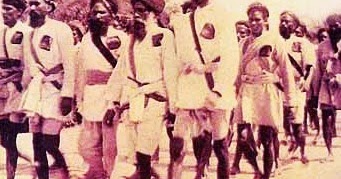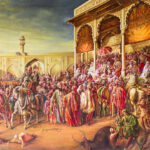The 1920s Akali movement, which started as the strictly religious movement to reform Sikh holy temples or Gurdwaras, quick way took on the political dimension and became an integral component of nations liberation struggle. Apart from being anti-imperialist, the Akali movement, also defined as the Gurdwara agitations or Gurdwara Reform Movement, describing the Sikhs’ long-run struggle in the earlier twentieth century for the freedom of their Gurudwara, or holy temple. Nonviolent agitation marches, religious meetings, and protests for Sikhs expressing their freedom to control their place of worship drew fervent help, especially from rural humans. Finally, the government had to give in to public pressure and permit Sikhs to administer their shrines, result in the Gurdwara Act of 1925 which developed the Shiromani Gurdwara Parbandhak Committee, to act as custodian of all important Sikh sites of worship. This blog will explain to you about the Akali Movement which will be supportful in Modern Indian History preparation.
Akali Movement – Background
The Akali Movement was found by Sikh reformers in order to purify their religious sites by remove on a evil social practices that had gradual way crept into them.
The Sikh Gurus set up the Dharamsala or Gurdwaras as centers of religious activity and moral and social instruction, as well as to offer food and shelter to the poor and needy.
The Sikh teaching of global equality was practiced here. Everyone, regardless of gender, caste, or color, was welcomed to visit these partake and locations in the free meal serving in the Langar (Community Kitchen).
In keeping with a Sikh tradition of piety, those in charge of the Gurdwaras did not regarded the offerings as their personal income but instead utilized them to run up free community kitchens and another social welfare projects.
During Sikh persecution that followed the death of tenth Sikh Guru, Guru Gobind Singh, control of Sikh Gurdwaras pass to the Udasis or those who professed Sikhism but did not strict way adhere to its outward symbols and thus escaping persecution.
The Udasis in charge of different Gurdwaras at the time offered a valuable service to the Sikh religion by keep the Gurdwaras open.
The majority of them were not connected to any specific shrine or its property and wealth but instead moved from place to place.
Some, however, set up admitted followers and regular institutions, become known as Mahants.
In the earlier stages, these Mahants enjoying the trust and reverence of their congregations. They also follow up Guru Nanak’s advice not to covet the offerings.
However, most Mahants abandon this tradition of purity and simplicity as a outcome of the increase in their income from revenue-free jagirs bestow by Maharaja Ranjit Singh and another Sikh chiefs on most of historic shrines.
Mahants engaged in the variety of evil practices, like stealing offerings and another valuables. The sacredness of these locations was damaged.
Akali Movement – Objectives
The Akali movement’s aim was to reduce, if not completely deleted, the clergy’s control over Gurudwaras.
The Sikh Gurdwara Bill, introduce out in 1925, placing all historical Sikh shrines in the nation under control of the Shiromani Gurdwara Parbandhak Committee.
The Akali movement was also involve in an Indian Independence movement and support Mahatma Gandhi’s Non-Cooperation movement.
Akali Movement was formed in order to liberating the historic Gurdwaras of the Sikhs from the control of these Mahants, who were backed by the British rule.
To free historic Gurdwaras like Tarn Taran, Guru-Ka-Bagh and Nanakana Sahib, Sikhs had to make supreme sacrifices and certain unspeakable atrocities.
Furthermore, Sikhs had to fight against the administration for religious freedom and the management of Gurdwaras in Darbar Sahib, Gurdwara Rakab Ganj, Gurdwara Jaito and Amritsar.
Factors Responsible for Akali Movement
Misuse of Shrine Funds
The rising of powerful Sikh chiefs in the late eighteenth century, and Ranjit Singh’s set up of a kingdom in 1799 A.D., brought about a significant change in Sikh religion.
The privileges and property connected to the religious sites result in the introduction of complex rituals and rites, as well as the emergence of powerful and wealthy Mahants.
Maharaja Ranjit Singh and another Sikh Chiefs endow almost all of the well-known Gurdwaras with huger tax-free jagirs.
The sudden increase in income results in a change in the manner of life of the Mahants of some significant Gurdwaras.
They started to convert the Gurdwara’s trust property into their personal possessions. This was in full defiance of Sikh Gurus’ and Sikh scriptures’ injunctions.
Gradually, the Mahants and their followers started to live in luxury and indulging in numerous social evils.
Sikhism followers try to put a stop to the evil practices of these Mahants through social protest and organizing a movement to free Sikh shrines from control of hereditary Mahants.
Because of the Akali Juthas, who led this reform movement, this movement is famous way signify as the Akali movement.








